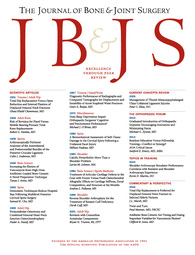
TRAUMA
Dynamic vs conventional external fixators for unstable distal radial fractures
This report has been verified
by one or more authors of the
original publication.
J Bone Joint Surg Am. 2010 Jul 21;92(8):1687-96.
70 patients with unstable extra-articular or intra-articular fractures of the distal part of the radius, less than 10 days old, were randomized to be fixed with either a dynamic or a static external fixator. At 1 year, non-significant functional differences were observed between the dynamic and static fixators in radial tilt or radial inclination, Disabilities of the Arm, Shoulder and Hand score, and a visual analog pain score. Patients fixed with static fixator required radial length shortening, whereas the length was better preserved with the dynamic fixator. Dynamic fixator had more superficial pin-tract infections.
Unlock the full ACE Report
You have access to {0} free articles per month.Click below to unlock and view this {1}
Unlock NowCritical appraisals of the latest, high-impact randomized controlled trials and systematic reviews in orthopaedics
Access to OrthoEvidence podcast content, including collaborations with the Journal of Bone and Joint Surgery, interviews with internationally recognized surgeons, and roundtable discussions on orthopaedic news and topics
Subscription to The Pulse, a twice-weekly evidence-based newsletter designed to help you make better clinical decisions
Exclusive access to original content articles, including in-house systematic reviews, and articles on health research methods and hot orthopaedic topics
Or upgrade today and gain access to all OrthoEvidence content for just $1.99 per week.
Already have an account? Log in


Subscribe to "The Pulse"
Evidence-Based Orthopaedics direct to your inbox.
{0} of {1} free articles
Become an OrthoEvidence Premium Member. Expand your perspective with high-quality evidence.
Upgrade Now













































































